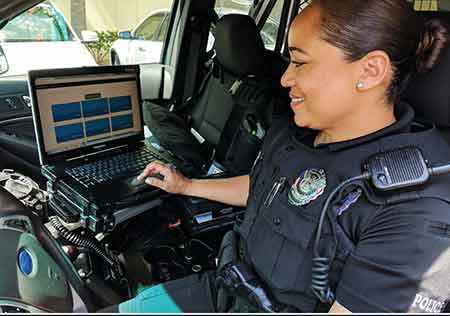
Pinecrest police officers now receive roll call briefing information via a web-based application – an initiative that uses technology to better relate to the incoming workforce and increase efficiency.
Technology has touched most police procedures, but one that has not changed much in 40 years is the roll call briefing.
Police Chief Samuel Ceballos, Jr. presented the virtual roll call idea to the Florida International University School of Computing and Information Sciences senior class. He proposed they develop the digital solution for their Capstone Project, and they accepted the challenge.
?This new, no cost, web-based application ushers the roll call briefing into the 21st century,? said Chief Ceballos.
?It also helps us adapt communications to the incoming workforce who have been receiving information digitally for most of their lives.?
Today, the virtual roll call digital solution provides a seamless transition for police officers who typically would have to attend a 15-minute meeting briefing at the beginning of a shift or miss it altogether due to scheduling conflicts such as court appearances.
Officers are able to patrol assigned zones faster, and can revisit briefing information that includes daily crime reports at the touch of a button. New policies can be disseminated quickly, and supervisors can confirm that every officer acknowledged, read, and understood the content of the document.
In addition, the department can post officer safety alerts and Be On the Look Out (BOLO) information from surrounding agencies on the virtual roll call briefing website.
Also provided in the web-application is a dynamic watch order component. Watch orders are plotted on Google Maps and appear as pins. Officers click on the pins to obtain information about each residence and conduct patrols.

